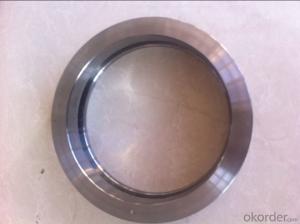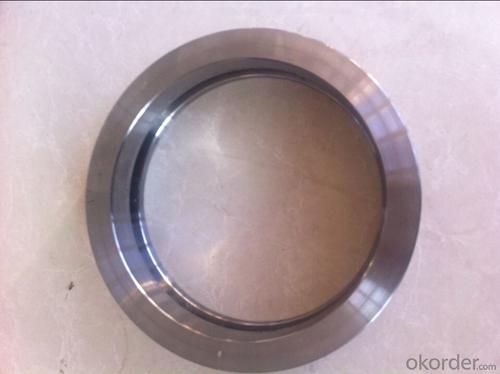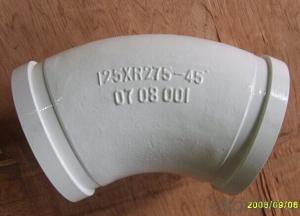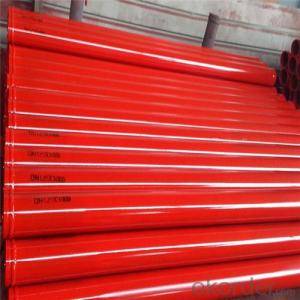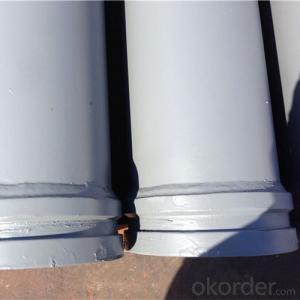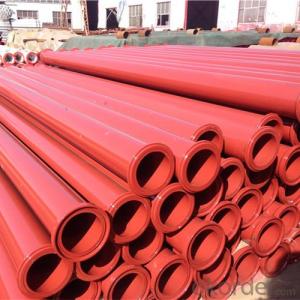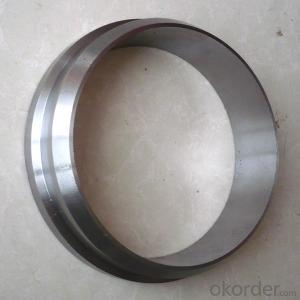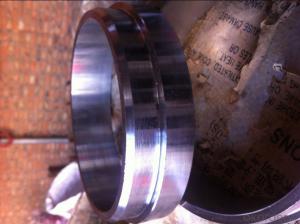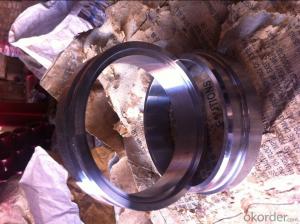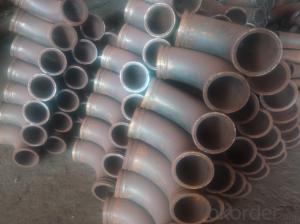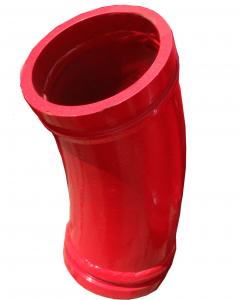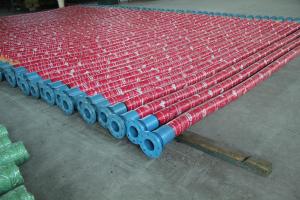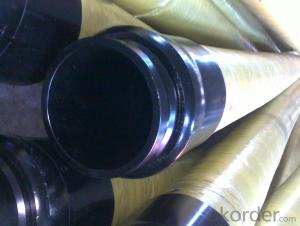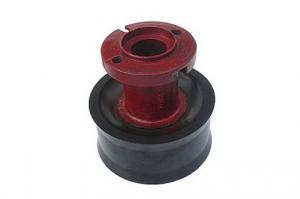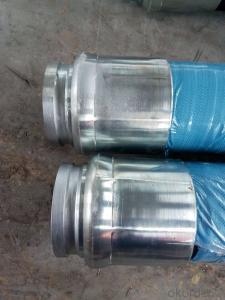Male and Female Flange DN175mm for Schwing Pump
- Loading Port:
- Tianjin
- Payment Terms:
- TT or LC
- Min Order Qty:
- 50 set
- Supply Capability:
- 5000 set/month
OKorder Service Pledge
OKorder Financial Service
You Might Also Like
Product Description:
Name:MALE AND FEMALE FLANGE DN 175MM for SCHWING PUMP
Materials: Steel 20
Inner Diameter: 125mm
Outer Diameter: 148mm
Scope of Application of the Equipment
MALE AND FEMALE FLANGE DN 175MM for SCHWING PUMP is a concrete pump spare parts for combined elbows and delivery pipes in concrete pump operations. It can be widely used in the various types of concrete pump like (PUTZMEISTER, SCHWING, CIFA, SANY, ZOOMLION, IHI, KYOKUTO Etc) available from us.
Product Advantages:
MALE AND FEMALE FLANGE DN 175MM for SCHWING PUMP are durable, strong, and resists corrosion.
Main Product Features:
· Premium quality
· Prompt delivery & seaworthy packing (10-20 days after receiving deposit)
Reliable performance
Easy and smooth operation
High safety.
· Professional Service
· Competitive pricing
Product Specifications:
Every 500 pcs MALE AND FEMALE FLANGE DN 175MM for SCHWING PUMP put in one seaworthy wooden box, and 20 boxes in one 20feet container.
FAQ:
Q1: Why buy Materials & Equipment from OKorder.com?
A1: All products have its ISO certifications, adheres to the highest standards and a commitment to supply chain safety and customer satisfaction.
Q2: How do we guarantee the quality of our products?
A2: We have established an advanced quality management system which conducts strict quality tests at every step, from raw materials to the final product. At the same time, we provide extensive follow-up service assurances as required.
Q3: How soon can we receive the product after purchase?
A3: Within three days of placing an order, we will begin production. The specific shipping date is dependent upon international and government factors, but is typically 10 to 30 workdays.
Q4: If we can produce some male and female flanges according to customersrequest?
A4: Yes, we can produce male and female flanges according to the difference country situations and different concrete pump to make it suitable to the market and customers. We have very professional technical team to make the design.
Q5: How to make a quick resolution for after service?
A5:We have overseas branches all-around of world, IF needed, the seller shall dispatch 2 engineers to the buyer's site for supervision of training. The buyer shall make available of necessary facilities &skilled personnel at site for training.
Images:
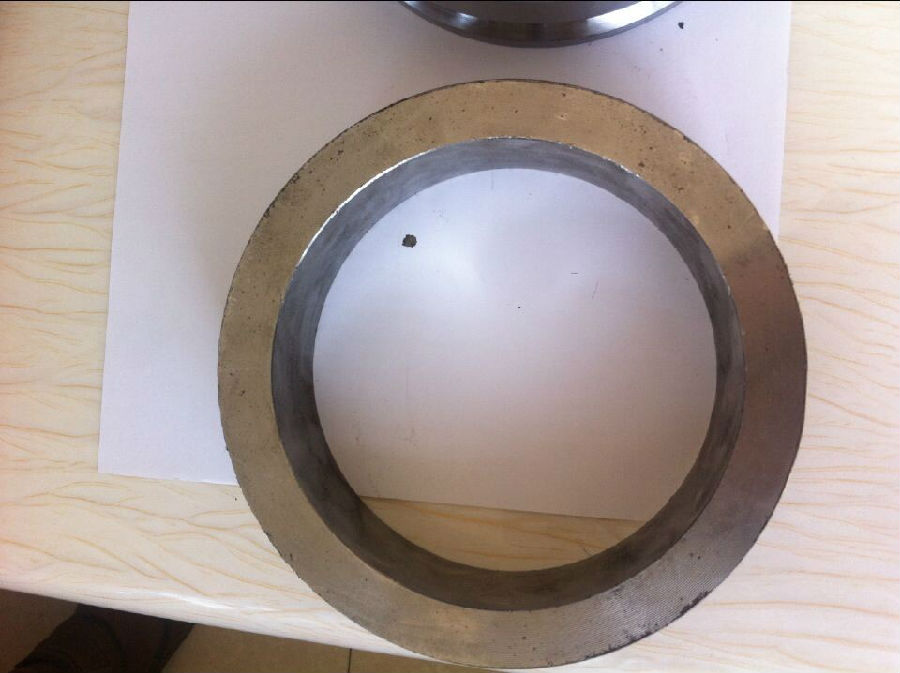
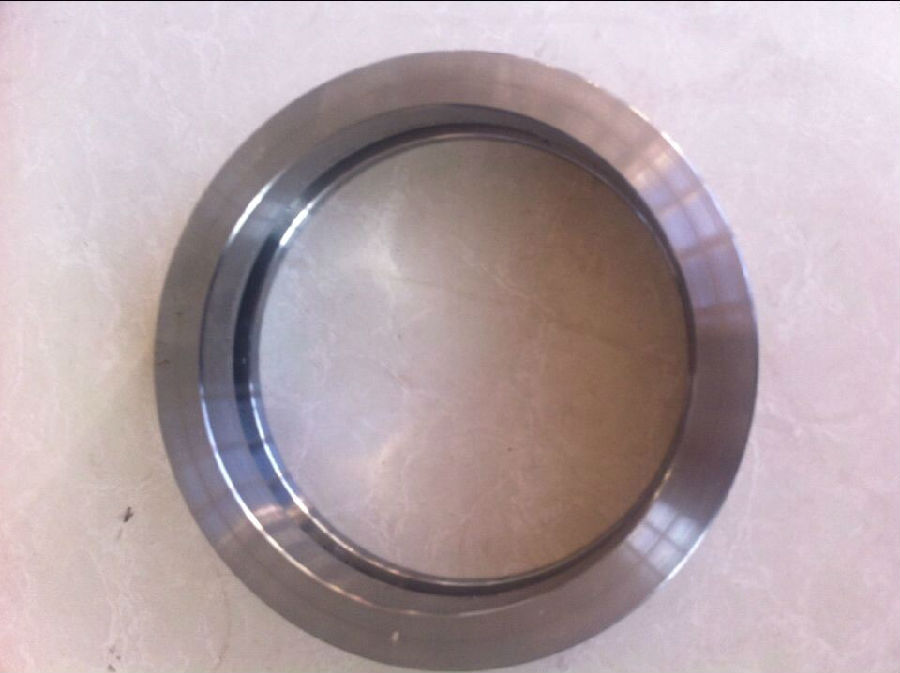
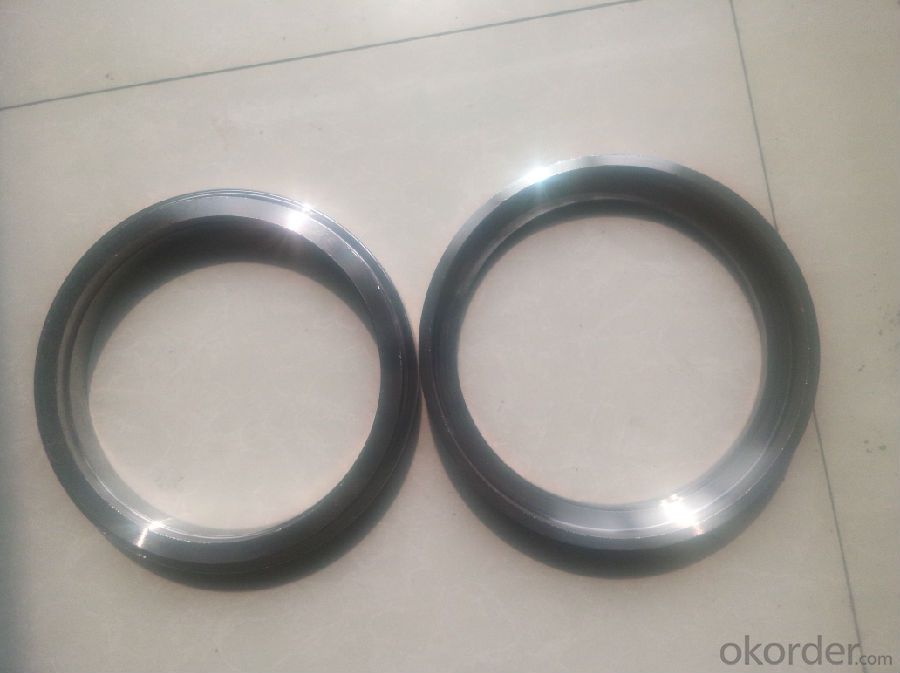
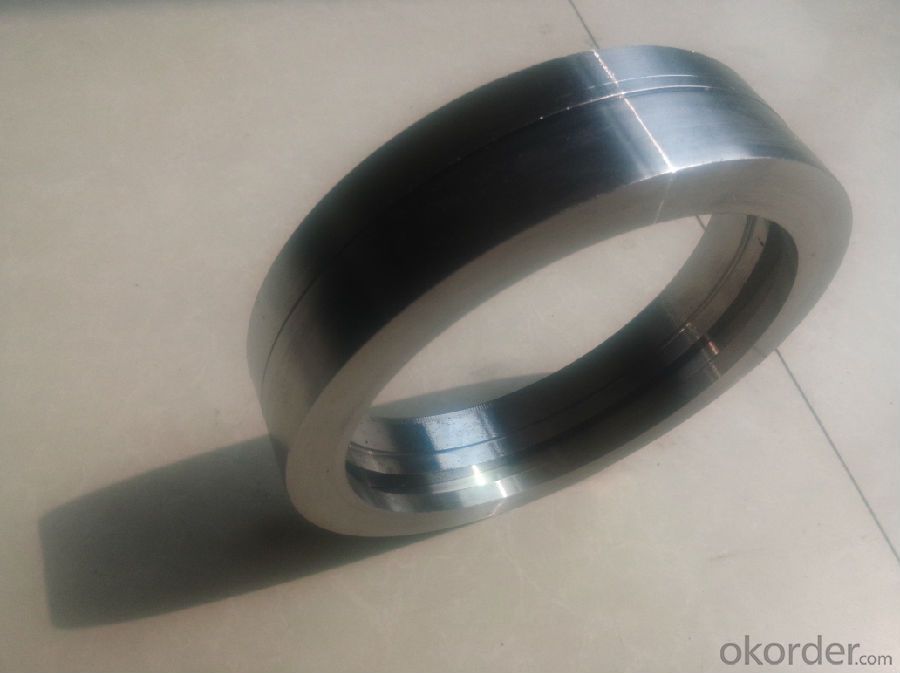
- Q: Are there any specific guidelines for the installation of wear plates or wear rings in concrete pump spare parts?
- Yes, there are specific guidelines for the installation of wear plates or wear rings in concrete pump spare parts. These guidelines typically include ensuring proper alignment and fit, using the correct torque specifications for fasteners, and applying appropriate lubrication. It is important to follow these guidelines to ensure optimal performance and longevity of the wear parts.
- Q: Are there any specific guidelines for the installation of hopper components or agitators in concrete pump spare parts?
- Yes, there are specific guidelines for the installation of hopper components or agitators in concrete pump spare parts. These guidelines typically include instructions on proper alignment, securing of bolts, lubrication, and ensuring all components are properly connected. It is important to follow these guidelines to ensure safe and efficient operation of the concrete pump.
- Q: How can I minimize downtime during the replacement of concrete pump spare parts?
- To minimize downtime during the replacement of concrete pump spare parts, it is crucial to follow a few key steps. First, ensure that you have a comprehensive understanding of the specific spare parts required for your concrete pump. This will help you streamline the ordering process and minimize delays. Additionally, it is essential to schedule regular maintenance and inspections to identify any potential issues beforehand, allowing you to proactively replace parts before they fail. Lastly, work with a reputable supplier who can provide high-quality spare parts promptly, reducing downtime.
- Q: What are the indications of a malfunctioning concrete pump water pump?
- A malfunctioning concrete pump water pump can be identified through several indicators. 1. Insufficient water flow: A clear sign of a faulty water pump is the lack of water flow. If the pump is not operating correctly, it may fail to supply water to the concrete pump, leading to reduced or no water flow. 2. Decreased water pressure: Another indication of a malfunctioning water pump is reduced water pressure. If the pump is not working properly, it may struggle to generate sufficient pressure for effective water delivery to the concrete pump. This can result in a weaker or inconsistent stream of water. 3. Abnormal noises or vibrations: Strange noises or vibrations emitted by the water pump can suggest a malfunction. Mechanical issues or loose components within the pump can cause these unusual sounds or vibrations. 4. Excessive heat: A malfunctioning water pump can also overheat due to various reasons such as a clogged filter, worn-out bearings, or a faulty motor. Overheating can cause further damage and eventually lead to the pump's complete failure. 5. Leakage: The presence of visible leaks around the water pump indicates a malfunction. Damaged seals or gaskets, loose connections, or cracks in the pump housing can cause leaks. These leaks result in water loss and reduced pump efficiency. 6. Inconsistent or unpredictable water flow: When the water pump is not functioning properly, it can cause irregular or unpredictable water flow. This uneven distribution of water to the concrete pump affects the quality and consistency of the pumped concrete. Regular inspection and maintenance of the water pump are crucial to ensure its proper functioning. If any of these signs are observed, it is advisable to promptly address the issue by seeking professional assistance to diagnose and repair the malfunctioning water pump.
- Q: How often should control system sensors be calibrated or replaced?
- The calibration or replacement frequency of control system sensors varies depending on several factors, including the type of sensor, its application, environmental conditions, and the manufacturer's recommendations. Typically, it is advisable to calibrate control system sensors at least once a year. Nevertheless, certain sensors may necessitate more frequent calibration due to their sensitivity or importance in the system. For instance, sensors used in safety-critical applications or those exposed to harsh environmental conditions may require calibration every six months or even quarterly. Furthermore, it is vital to regularly monitor the performance of control system sensors to ensure accurate readings and dependable operation. This can be accomplished through routine maintenance and periodic checks. If any indications of sensor drift, inconsistency, or failure are observed during these checks, immediate calibration or replacement may be required. Additionally, the manufacturer's recommendations play a significant role in determining the intervals at which calibration or replacement should occur. Each sensor comes with its own specifications and guidelines provided by the manufacturer. It is crucial to adhere to these recommendations to maintain optimal performance and prolong the lifespan of the sensor. In conclusion, the calibration or replacement frequency of control system sensors should be determined by considering a combination of factors, including industry standards, application requirements, environmental conditions, and manufacturer's guidelines. Regular monitoring, routine maintenance, and adherence to these factors will ensure that control system sensors operate accurately and reliably.
- Q: How can one determine the correct viscosity and temperature range for lubricants used in concrete pump spare parts?
- To determine the correct viscosity and temperature range for lubricants used in concrete pump spare parts, one can refer to the manufacturer's recommendations and specifications. These guidelines will outline the appropriate viscosity grade and temperature range for optimal performance and longevity of the spare parts. It is important to follow these recommendations to ensure efficient lubrication and protection of the concrete pump components. Additionally, consulting with industry experts or conducting research on lubrication requirements specific to concrete pump spare parts can also provide valuable insights for determining the correct viscosity and temperature range.
- Q: How often should a hopper filter be cleaned or replaced?
- The cleaning or replacement frequency of a hopper filter relies on various factors such as hopper type, contaminant nature, and usage pattern. It is generally suggested to clean or replace the hopper filter every three to six months. However, if the hopper operates in a dusty or dirty environment, or deals with materials generating abundant debris, more frequent cleaning or replacement might be necessary. Regular examination of the hopper filter is vital to assess particle accumulation and filtration efficiency. Additionally, if the hopper filter displays signs of damage or wear, immediate replacement is essential to maintain peak performance and prevent potential contamination. Ultimately, it is advisable to consult the manufacturer's guidelines and recommendations for the specific hopper filter in use.
- Q: Are there any specific warranty options available for concrete pump spare parts?
- Yes, there are specific warranty options available for concrete pump spare parts. Many manufacturers and suppliers offer warranties on their products to provide customers with peace of mind and assurance of quality. The specific warranty options may vary depending on the manufacturer or supplier, but they generally cover defects in materials or workmanship. It is recommended to carefully review the warranty terms and conditions before purchasing concrete pump spare parts to understand what is covered and for how long. Some warranties may provide a limited duration of coverage, while others may offer extended warranties for an additional cost. Additionally, it is important to follow the recommended maintenance and usage guidelines to ensure the warranty remains valid. In case of any issues or concerns with the spare parts during the warranty period, customers can typically contact the manufacturer or supplier for assistance.
- Q: Are there any specific cleaning procedures for concrete pump spare parts?
- Concrete pump spare parts have specific cleaning procedures that must be followed to maintain their efficiency and longevity. It is crucial to ensure that these parts are clean and free from any dirt or debris. Here are some general guidelines to consider when cleaning concrete pump spare parts: 1. Prioritize Safety: Before initiating the cleaning process, ensure that you are wearing appropriate personal protective equipment (PPE), such as gloves and safety goggles, to protect yourself from potential hazards. 2. Disconnect Power: Before cleaning any electrical or mechanical parts, make sure to disconnect the power supply to prevent accidents. 3. Eliminate Excess Dirt: Employ a brush or dry cloth to eliminate any loose dirt or debris from the surface of the spare parts. This action will enhance the effectiveness of the cleaning process. 4. Utilize Suitable Cleaning Solution: Select an appropriate cleaning solution based on the type of spare parts and the level of dirt. Mild detergents or soapy water are generally safe to use, while harsh chemicals or solvents should be avoided to prevent damage to the parts. 5. Scrub and Rinse: Dip a clean cloth or sponge into the cleaning solution and gently scrub the spare parts to remove stubborn dirt or stains. Thoroughly rinse the parts with clean water to eliminate any residue from the cleaning solution. 6. Complete Drying: After rinsing, make sure to completely dry the spare parts using a clean cloth or by air-drying. Moisture can lead to rust or corrosion, so ensuring thorough drying is essential. 7. Lubricate Moving Parts: Apply an appropriate lubricant to any moving components, such as bearings or gears, to ensure smooth operation. This will help prevent wear and tear and extend the lifespan of the parts. 8. Regular Maintenance: To maintain the optimal condition of the concrete pump spare parts, it is recommended to perform regular cleaning and maintenance. Periodically inspect them for any signs of damage or wear and replace them if necessary. By adhering to these specific cleaning procedures, you can effectively clean and maintain the concrete pump spare parts, guaranteeing their reliability and longevity.
- Q: How can a faulty electric motor affect the pump's performance?
- A faulty electric motor can significantly impact the pump's performance. It may cause the motor to run at a slower speed, leading to reduced pumping capacity and lower flow rates. Additionally, a faulty motor can result in increased power consumption, decreased efficiency, and overheating issues. In severe cases, the motor may completely fail, causing the pump to stop working altogether. Therefore, addressing any issues with the electric motor promptly is crucial to maintaining optimal pump performance.
Send your message to us
Male and Female Flange DN175mm for Schwing Pump
- Loading Port:
- Tianjin
- Payment Terms:
- TT or LC
- Min Order Qty:
- 50 set
- Supply Capability:
- 5000 set/month
OKorder Service Pledge
OKorder Financial Service
Similar products
Hot products
Hot Searches
Related keywords
